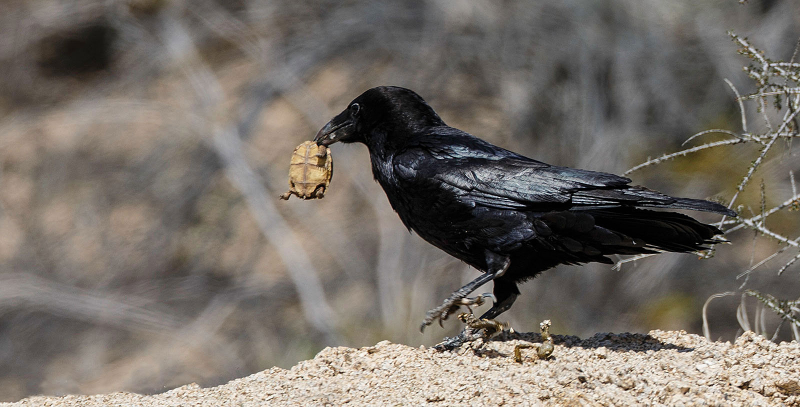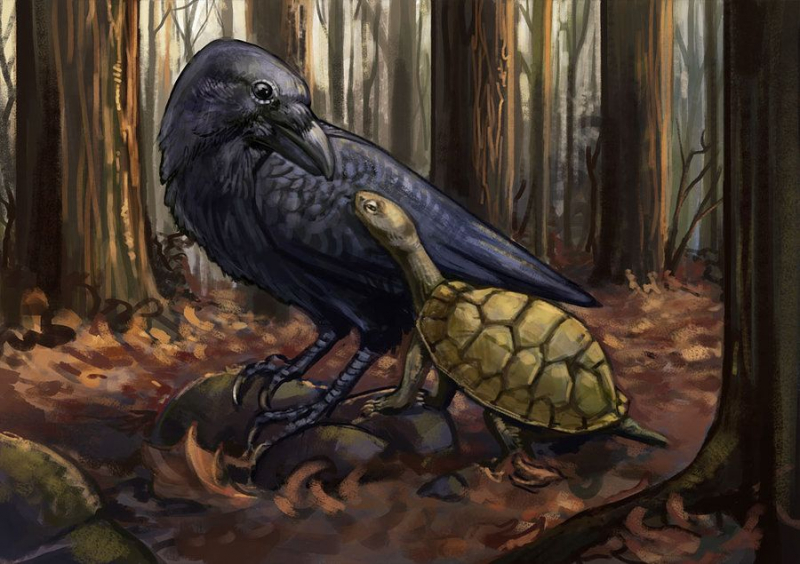Ravens
As large predators like ravens are expanding their numbers into territories with abundant food resources. This expansion has come at the expense of several threatened species, including the tortoise, which was once eaten by birds.
Even turtles up to 10 years old can hardly withstand the hammering of the raven's beak. Zoologists have seen many turtle carcasses underneath the raven's nest, whose bodies have been pierced by bullets by the beak of the crow. In one case, federal wildlife researchers counted 250 young turtle carcasses under a single nest of crows over four years. With the characteristics that the researchers found, the raven is considered a tortoise predator that eats tortoise
It is debatable whether ravens are natural predators of tortoises, or subsidized predators by humans. However, there is no denying the fact that these larger members of the genus Corvus consider turtles their meal. Common ravens are considered to be the biggest threat to the survival of desert turtles in the Mojave Desert in the southwestern United States.
Previously, ravens were thought to only be able to prey on young turtles and newly hatched turtles with soft shells. More recently, however, it has been discovered that they can also hunt and eat adult turtles. Somehow, they learned that they could reach the soft body of a turtle by pecking between its shell and the horn protruding under its neck.








